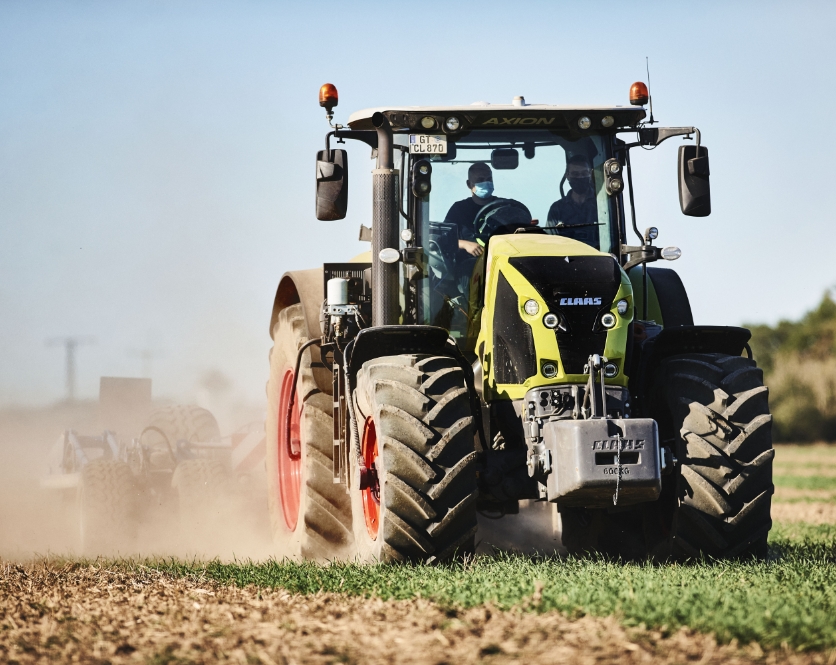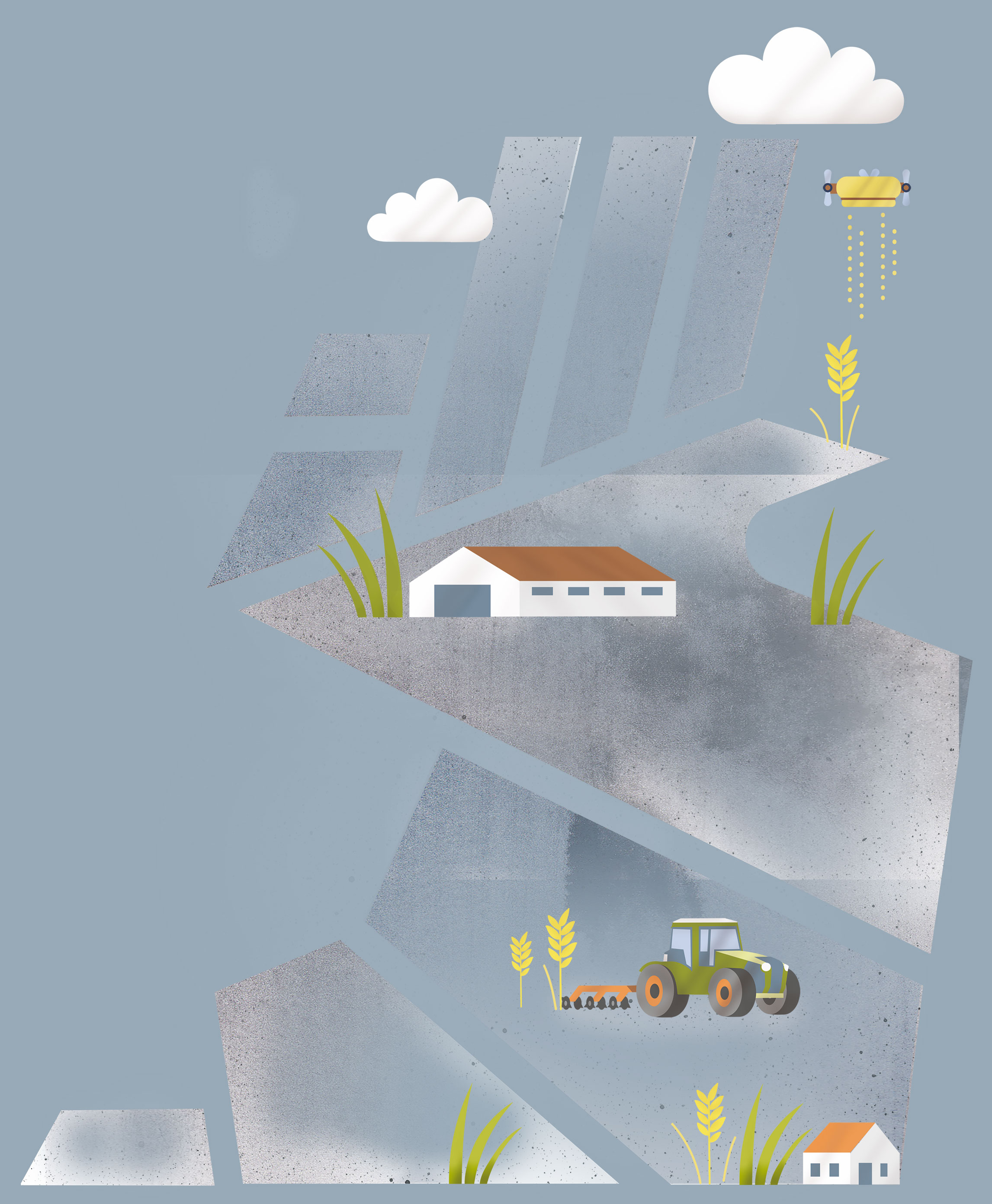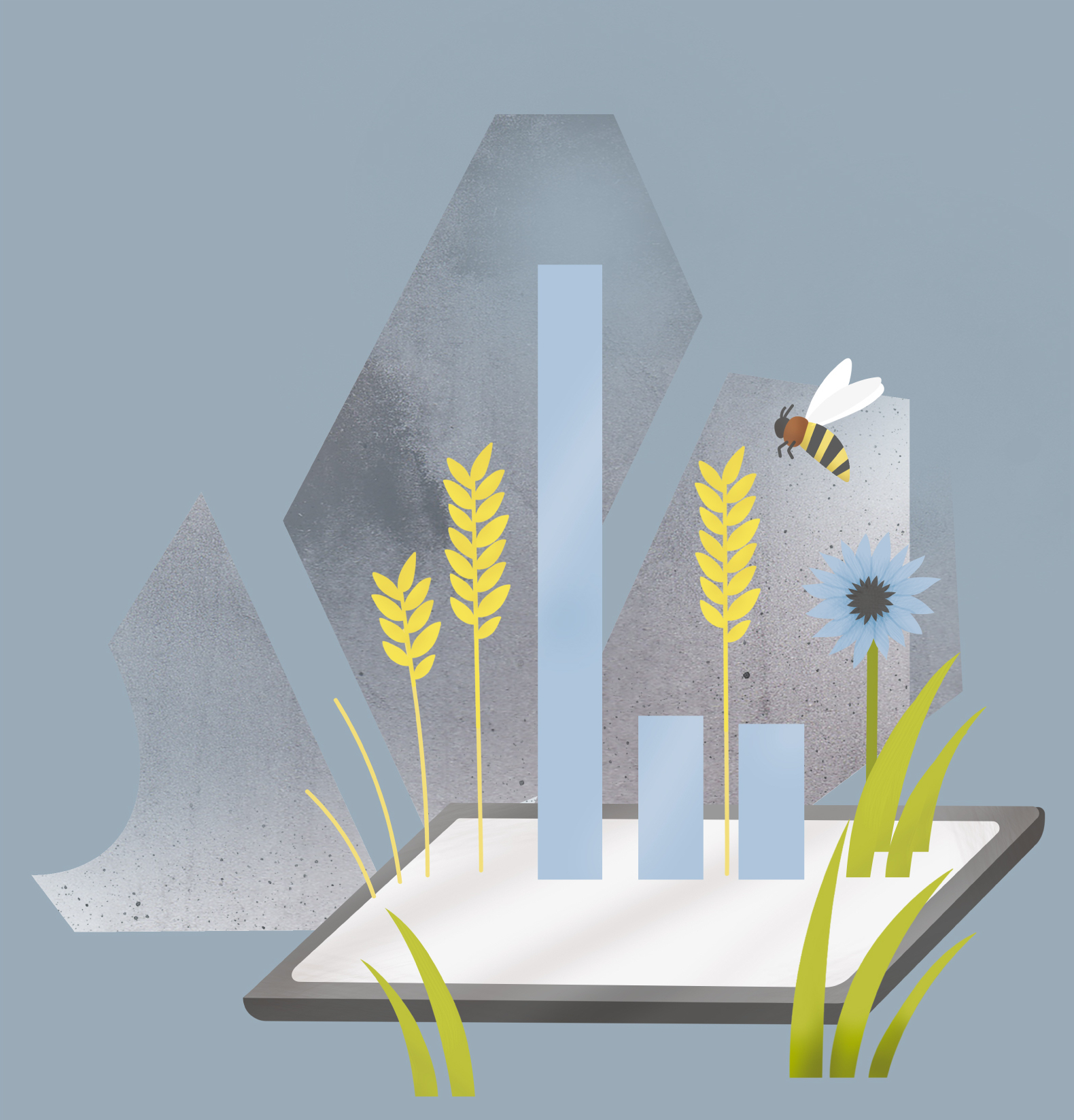
“A Clever Symbiosis“
What makes the Sustainable Tractor of the Year 2021 so special?
Read more
Idyllic countryside, happy cows, and farmers with devilish grins: The reality of organic farming has never looked like this, no matter what some commercials might show you. Organic farms have long been an established part of agriculture. But how big can such a business be? And is it still appropriate to think in terms of conventional and organic?
Text: Jörg Huthmann

A topic of similar importance to climate change is the growth in the world’s population. The Earth is predicted to have ten billion inhabitants by 2050 – and it will be up to agriculture to feed them. The ten-billion figure is often used as an argument against small-scale, non-industrial farming and in favor of professional, large-scale agriculture streamlined for efficiency. At the same time, precisely this intensive form of cultivation is often criticized. This situation is creating an “either-or conflict.” However, given the challenges of feeding the globe in times of climate change, it is worth looking at the alternatives offered by both approaches.
Productive and nature-friendly
The fact is that organic production is still a niche. Only 1.5 percent of arable land worldwide is cultivated in this way. Another fact, though, is that this proportion has more than doubled in ten years. The frequently asked question of whether organic farming alone can feed the planet is clearly answered by the largest meta study available on this subject. Its authors at the University of Giessen, Germany, found that due to relatively low yields, full conversion to ecological processes would require more land in order to produce the same quantity of food. The figures quoted in the study fluctuate between 23 and as much as 67 percent more land – according to the level of knowledge and equipment in the respective agricultural sectors. The positive effects on biodiversity would even be reversed slightly due to the utilization of greater areas. The authors’ conclusion: “Systems that are both productive and environmentally friendly are needed. Developing them so that they are adapted to local conditions requires an intelligent combination of organic and conventional farming methods.”
Organic creates economies of scale
Such a solution is also described by the term “hybrid farming” coined by the agricultural technology expert Michael Horsch in recent years, which combines the advantages of the two “schools.” More and more farms are adopting this approach because their focus has shifted to sustainability. For example, laws are increasingly prohibiting the use of chemical herbicides, which have been the most effective way of combating pests and weeds in conventional agriculture up to now. Equally, consumers are making ever stronger demands for transparency of origin or animal-friendly practices. These effects can be seen on the producer and consumer sides in Europe and especially in the U.S., where organic food sales totaled 56.4 billion U.S. dollars in 2020, according to the Organic Trade Association (OTA). This makes the U.S. by far the world’s largest market for organic products, although there are significant differences in the understanding of organic farming there compared with Europe.
Regardless of the rules and regulations, these levels of sales prove that U.S. farmers can create economies of scale in non-conventional agriculture. Elsewhere, the vast plains of Australia also contain more than 35 million hectares of organic farms, almost half of the total number worldwide, as shown by data from the Research Institute of Organic Agriculture in 2021.
An encouraging dialogue about weeder technology is now taking place between organic and conventional farmers.”
Prof. Dr. Detlev Möller,
University of Kassel
Germany follows suit
Likewise, German farms are producing goods more and more frequently according to regional organic standards. This is confirmed by Naturland, one of the country’s largest organic food associations, which has 4,200 member farms in Germany, according to its own figures, and connects 100,000 farmers in more than 60 countries. Johannes Weiß is a farmer himself and an adviser at Naturland to farms that want to switch from conventional to organic. He believes that large-scale organic farms are conceivable provided that, for example, shed designs and herd sizes take into account animal welfare, and cycles in fodder production are maintained. In his opinion, a sustainable approach will work “across several neighboring organic farms with short transport distances and positive carbon footprints.”
A similar view is taken by Professor Dr. Detlev Möller, head of the Faculty of Organic Agricultural Sciences at the University of Kassel. He, too, says that economies of scale apply to organic farms, but also refers to economies of scope, which, together with the identity of the farming associations, constitute a much larger counterbalance than in the conventional sector, in his opinion. “Establishing a cyclical economy on a national level, take liquid manure markets as an example,” says Professor Möller, “is certainly more difficult in the organic sector and is highly unlikely to become standard practice.”
Common ground on agricultural technology
When it comes to mechanization, Detlev Möller does not see any fundamental differences. Like Johannes Weiß, he recognizes that there are special factors relating to soil management and above all weed control. “An encouraging dialogue about weeder technology is now taking place between organic and conventional farmers,” says Möller.
Mechanical weed control, different crop rotation systems, and selecting taller varieties that shade the soil and therefore reduce weed growth are among the measures that help maintain soil fertility. The same also applies to undersown crops. In contrast, herbicides and fungicides can have an adverse effect on soil fertility. That, in turn, requires more fertilization. Organic farms try to steer clear of these problems as much as possible, preferring to use tine weeders and hoes for weed control.

A sustainable approach will work across several neighboring organic farms with short transport distances and positive carbon footprints.”
Johannes Weiß,
Adviser at the Naturland association
Manual work and robots
The fact that agricultural robots and mechanical solutions are increasingly available for such work is an interesting development for both conventional and organic farms. On the organic side, Möller points in particular to innovative, technologically-aware, and business-minded representatives that use robotic technologies in their special cultures. “Nevertheless, bands of weeders and harvest pickers remain a common sight even in larger organic businesses,” says Möller. However, he thinks it is quite possible that, in the future, human work will be supplemented or replaced to a large extent by intelligent robotic technology.
Digitalization and better marketing strategies
Digital technology has arrived in organic farming, too. But there are concerns about the handling and use of data and its processing. Above all, younger and well-educated farmers know exactly how valuable the data that can be collected and provided by modern agricultural machinery, satellites, or drones are. Both conventional and organic farms are united in their wish for open standards and control over their own data.
One thing is clear: Organic farming has long ceased to be a niche business. Johannes Weiß from Naturland adds: “If organic farms want to offer their products to mainstream consumers, it won’t be enough to sell them in health food shops.” Food retailers and above all discount stores order in large quantities. The fact that, overall, conventional farming feeds the majority of people is not about to change any time soon. But the methods used in both sectors are becoming more similar.
The next step in the evolution – which will be mainly digital – is the tracking of goods flows from the shed or field to the consumer. This transparency is welcomed by many of the parties involved in the production and sale of farming products. It represents an opportunity to be seized regardless of farming method or philosophy.